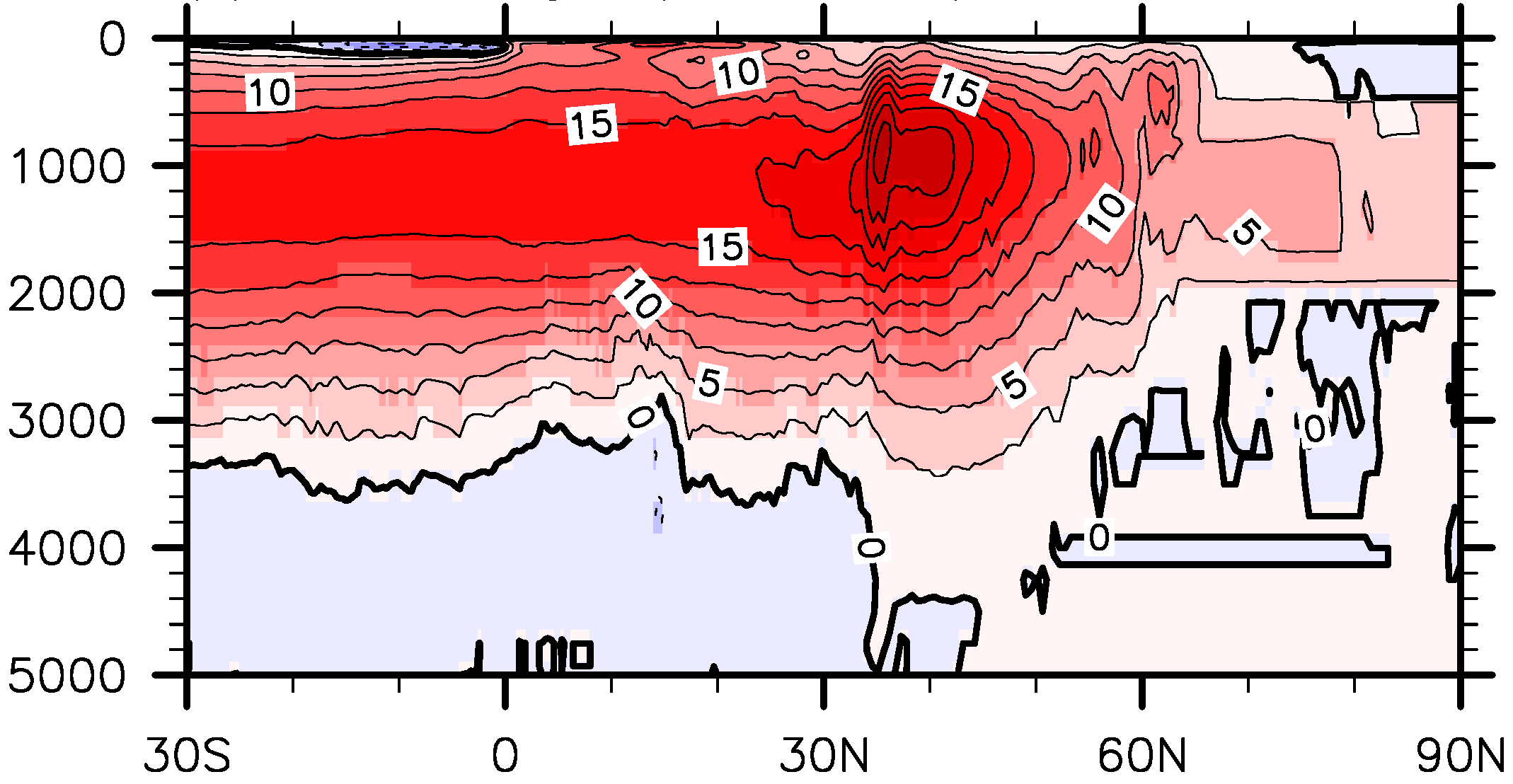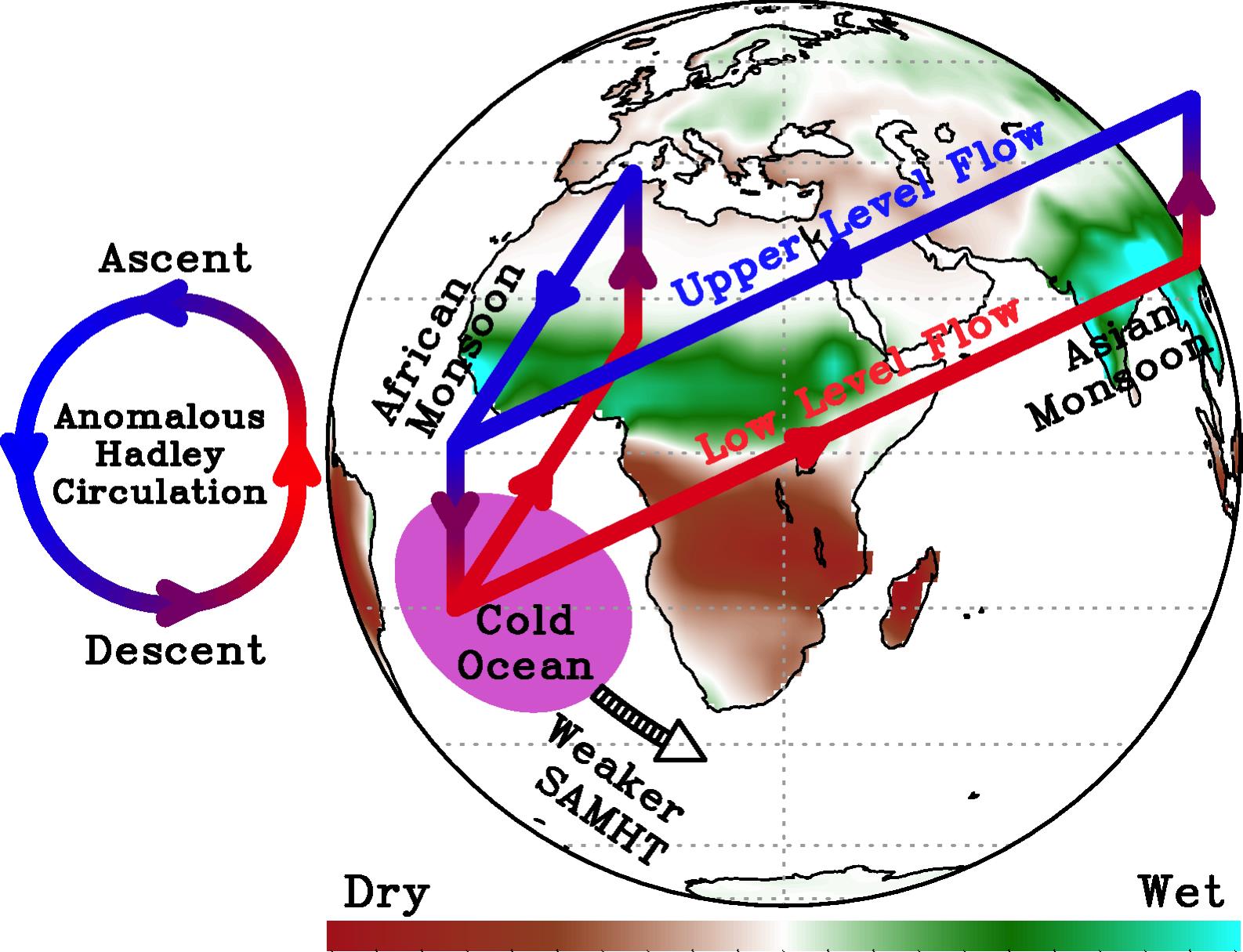News and Highlights
02/07/2019:
Global meridional overturning circulation (GMOC) revisited
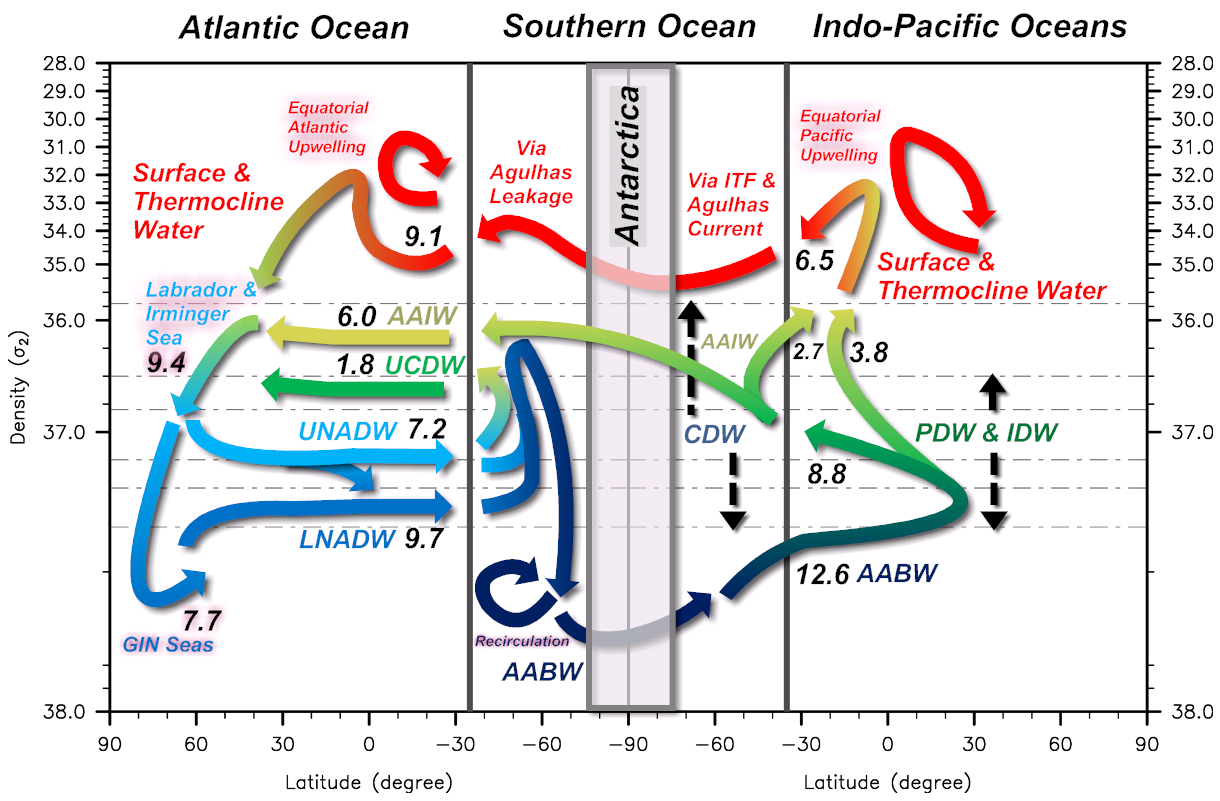
Ocean tracers such as heat, salt and carbon are perpetually carried by the global meridional overturning circulation (GMOC) and redistributed between hemispheres and across ocean basins from their source regions. The GMOC is therefore a crucial component of the global heat, salt and carbon balances. In a new article published in Geophysical Research Letter (Lee et al., 2019), Sang-Ki Lee and his team from NOAA/AOML, CIMAS/University of Miami and NCAR revisited our current understanding of the GMOC by using a global ocean model simulation with its temperature and salinity corrected toward observations. This study presents the derived GMOC, validates it against observations and summarizes in a schematic, which highlights several important but relatively under-explored aspects of the GMOC, including the pathway through which the heaviest water mass formed around the Antarctica is brought to the surface. The study further shows that some key aspects of the GMOC are poorly captured in a model run without the temperature and salinity corrections, suggesting that current climate models do not reproduce realistic paths of the GMOC and the associated global heat, salt and carbon balances.
08/01/2018:
Welcome aboard Dongmin!

Dr. Dongmin Kim is a recent graduate from Ulsan National Institute of Science and Technology (UNIST) of South Korea. He joined our team as a postdoc in August 1, 2018. Dongmin will utilize the Community Earth System Model version 2 (CESM2) to study the impact of the AMOC and its pathways on the global atmospheric dynamics. Welcome aboard Dongmin!
07/24/2018:
2018 International AMOC science meeting

PIs of the projects attended the 2018 International AMOC science meeting, which was held in Miami, Fl during July 24-27, 2018. Hosmay Lopez had an oral presenation "The South Atlantic Meridional Overturning Circulation: A driver of climate variability and extremes". Marlos Goes had an oral presenation "Assessing uncertainties on the stability of the AMOC during Heinrich events using simulations from one Earth System model". Shenfu Dong presented a poster "SAMOC variations during the past 24 years and their role in ocean heat content changes".Sang-Ki Lee presented a poster "Pathways of the global meridional overturning circulation inferred from a data-constrained ocean & sea-ice model".
03/19/2018:
Early emergence of anthropogenically forced heat waves in the western United States and Great Lakes
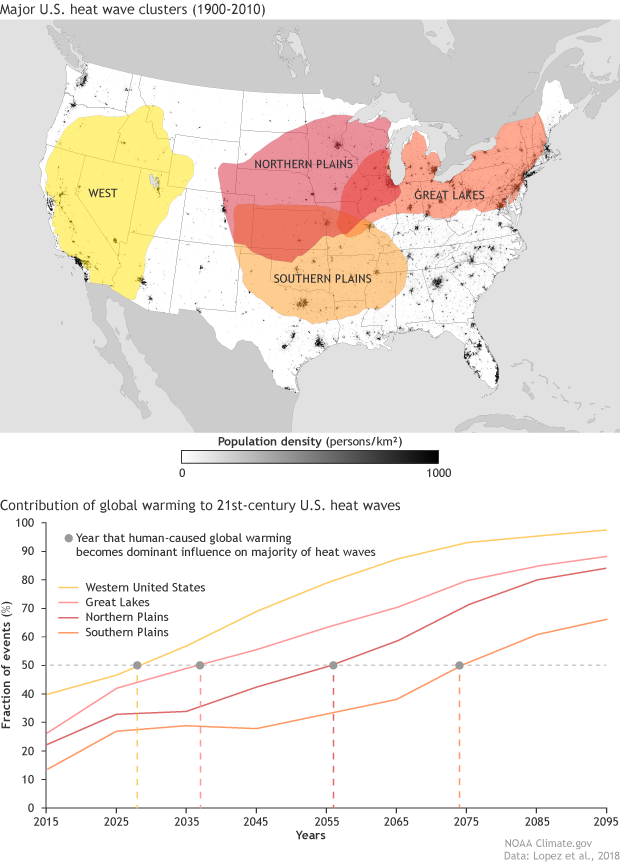
Climate projections for the twenty-first century suggest an increase in the occurrence of heat waves. However, the time at which externally forced signals of anthropogenic climate change (ACC) emerge against background natural variability (time of emergence (ToE)) has been challenging to quantify, which makes future heat-wave projections uncertain. In a new article published in Nature Climate Change (Lopez et al., 2018), Hosmay Lopez and his team combine observations and model simulations under present and future forcing to assess how internal variability and ACC modulate US heat waves. The team shows that ACC dominates heat-wave occurrence over the western United States and Great Lakes regions, with ToE that occurred as early as the 2020s and 2030s, respectively. In contrast, internal variability governs heat waves in the northern and southern Great Plains, where ToE occurs in the 2050s and 2070s; this later ToE is believed to be a result of a projected increase in circulation variability, namely the Great Plain low-level jet. Thus, greater mitigation and adaptation efforts are needed in the Great Lakes and western United States regions. This work was highlited in climate.gov.
05/23/2017:
2017 US AMOC science team meeting

PIs of the projects attended the 2017 US AMOC science team meeting, which was held in Santa Fe, NM during May 23-25, 2017. Sang-Ki Lee presented a poster "Southward pathways of the upper and lower North Atlantic Deep Water and their impact on the Atlantic meridional heat transport". Marlos Goes presented a poster entitled "The role of African dust on AMOC during Heinrich events". Hosmay Lopez had an oral presentation "Remote influence of Interdecadal Pacific Oscillation on the South Atlantic Meridional Overturning Circulation variability" and a poster presentation "A reconstructed South Atlantic Meridional Overturning Circulation time series since 1870". Shenfu Dong presented a poster "Altimetery-derived outh Atlantic Meridional Overturning Circulation between 20S and 35S since 1993".
05/23/2017:
Biweekly AMOC discussion meetings
PhOD has resumed the AMOC discussion meetings to discuss new papers and ideas concerning AMOC and related topics. The meeting is held biweekly at AOML (normally 2nd floor conference room). In the first meeting (May 31st), Alexandra Gronholz led the discussion of "Impact of slowdown of Atlantic overturning circulation on heat and freshwater transports" by Kelly et al. (2016).
04/19/2017:
Journal of Geophysical Research (JGR) Editors' Highlight
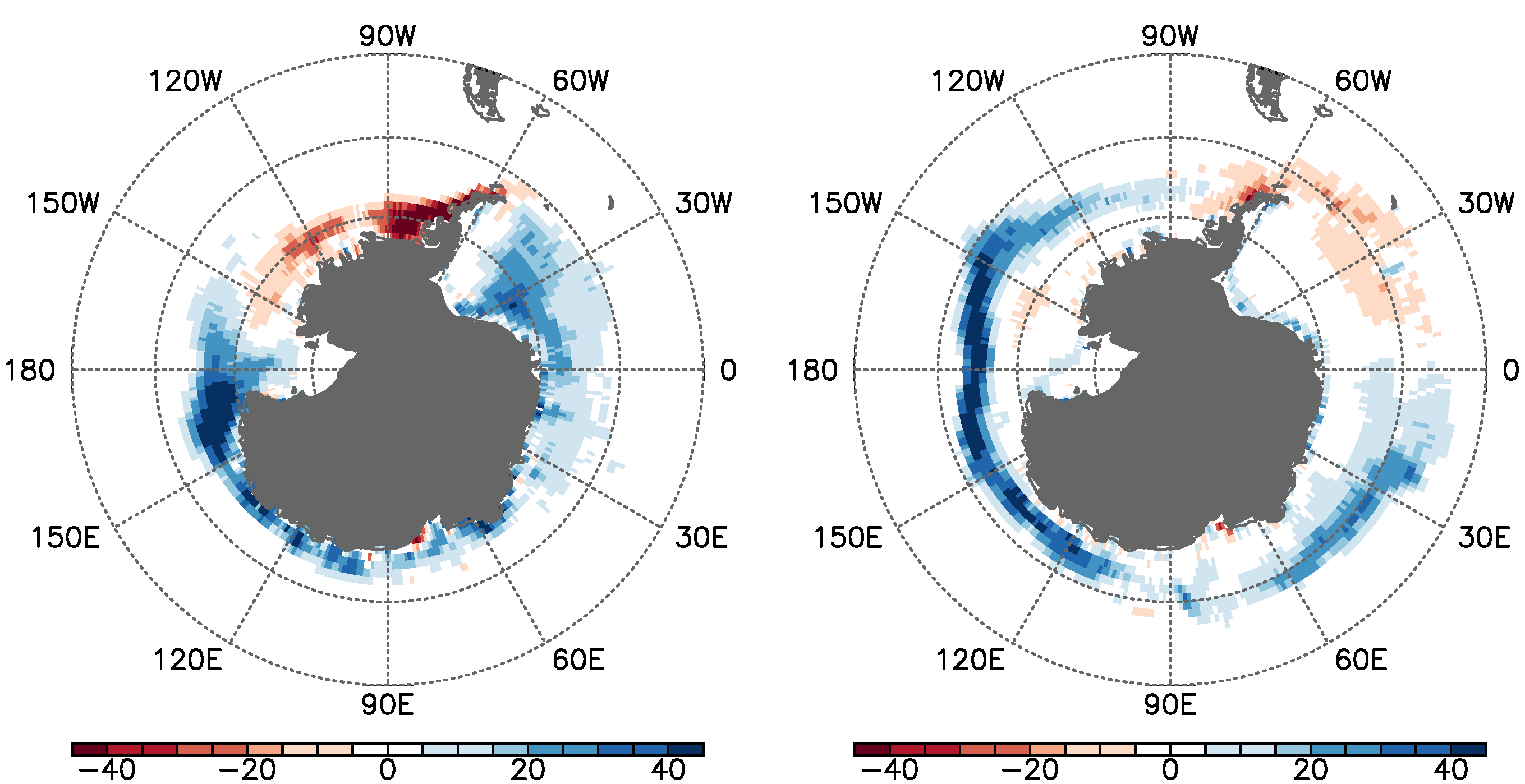
"Wind-driven ocean dynamics impact on the contrasting sea-ice trends around West Antarctica" by S.-K. Lee et al. (2017) was selected as Journal of Geophysical Research (JGR) Editors' Highlight: "Much of the work on the cause of Antarctic sea ice over recent decades has focused on atmospheric drivers but this paper focuses on the ocean's role. The authors analyse the trend of Antarctic sea ice over the past 35 years on the basis of satellite data and model simulations forced with atmospheric reanalysis products. Their findings suggest that ocean processes play a crucial role in determining the seasonality of sea ice trends. They also reveal that the sea-ice response is regional".
04/01/2017:
Welcome aboard Alexandra!
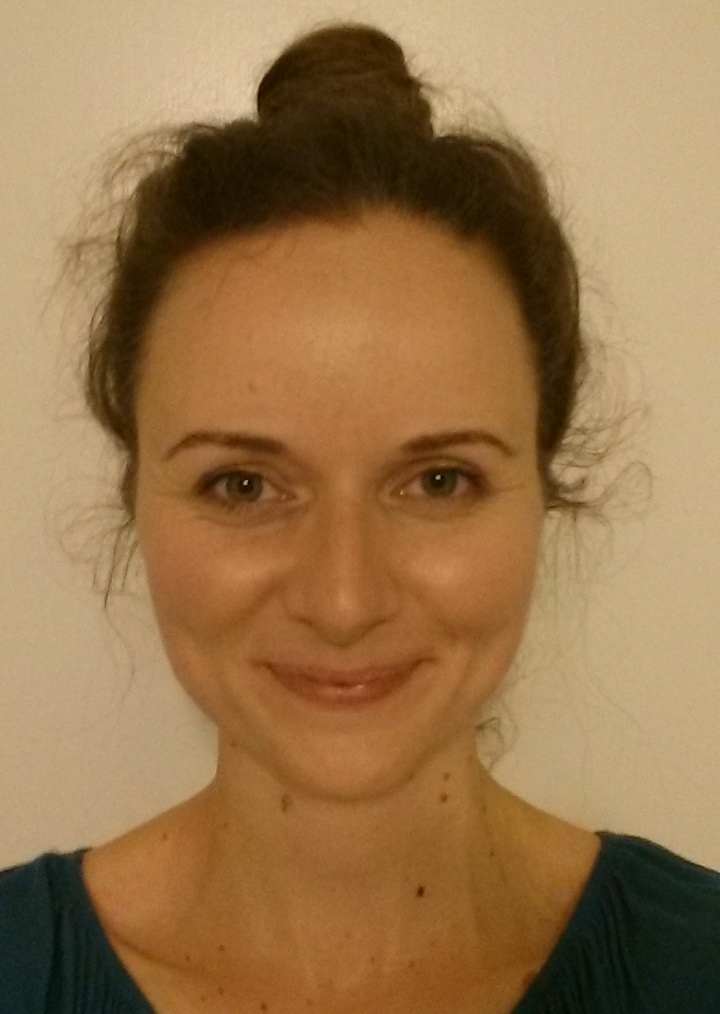
Dr. Alexandra Gronholz, a recent graduate from University of Bremen in Germany, joined our team as a postdoc in April, 2017. She will use the Modular Ocean Model version 6 to study the variability of the meridional overturning circulation in the South Atlantic and its link to the eddy processes. Her research will directly contribute to NOAA's long-term goal and objective, Climate Adaptation and Mitigation - Improved scientific understanding of the changing climate system and its impacts. Welcome aboard Alexandra!
